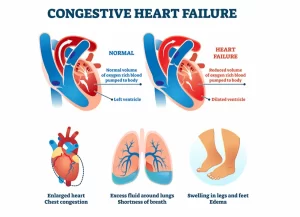By Gabriela Calvi – Epidemiologist| Educator and Health Advocate| Podcaster “Good Morning Health”
Food Safety – Foodborne illnesses are generally infectious or toxic in nature and are caused by bacteria, viruses, parasites or chemicals that penetrate the body through contaminated water or food. In turn, foodborne pathogens can cause severe diarrhea or debilitating illnesses, such as meningitis.
Diarrheal infections are the most commonly associated with the consumption of contaminated food. Of this, it is estimated that every year in the world about 600 million people – almost 1 in 10 inhabitants – fall ill from eating contaminated food and that 420,000 die from this same cause. At the same time, $110 billion in productivity and medical expenses are lost each year to unhealthy food in low- and middle-income countries.
Examples of unhealthy foods include uncoated animal foods, fruits and vegetables contaminated with feces, and raw shellfish containing marine biotoxins. Salmonella, Campylobacter and enterohemorrhagic Escherichia coli are among the most common foodborne pathogens affecting millions of people each year. The predominant symptoms are fever, headaches, nausea, vomiting, abdominal pains and diarrhea. Foods associated with outbreaks of salmonellosis are, for example, eggs, poultry meat and other animal products. Cases of foodborne Campylobacter infection are mainly caused by the ingestion of raw milk, raw or undercoat poultry meat and contaminated drinking water. On the other hand, Escherichia coli is associated with the consumption of unpasteurized milk, under-cooked meat, fresh fruit and vegetables.
Listeria infection causes spontaneous abortions and neonatal death. If it is true that this disease is rare, the severity of its consequences can become deadly is real, especially for infants, children and ancioanos. From which, it puts listeriosis as one of the most serious foodborne infections. Listeria is found in unpasteurized dairy products and in various prepared foods, which can grow at refrigeration temperatures. In the same way that we have bacteria, we can also find viruses, parasites, prions, chemicals in food.
World Food Safety Day is celebrated on June 7, 2021 and aims to draw attention and inspire action to help prevent, detect and manage foodborne risks. Food safety can be defined as the set of conditions and measures necessary during the production, storage, distribution and preparation of food to ensure that once ingested, they do not pose a health risk.
So, access to safe and nutritious food in sufficient quantity is critical to sustaining life and promoting good health. However, for this to happen, food safety is considered a joint responsibility with government, industry and consumers. It is for this reason that we all have an important role to play, from farm to fork, in making sure that the food we eat is safe and does not harm our health.
After all, we are all consumers. For this reason, as the last final link in the chain, we have the responsibility to ensure that the preservation and / or storage and preparation of food is suitable, so that the food to be consumed does not present a risk to health.
I invite you to join me to listen to the Buenos Dias Salud podcast to learn the basic messages of the 5 Golden Rules for Food Safety which are: 1) maintain cleanliness; 2) separates raw and cooked foods; 3) Cook completely; 4) keep food at safe temperatures; 5) use safe water and raw materials.


